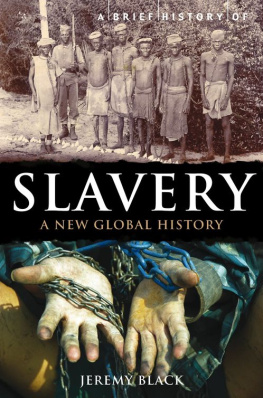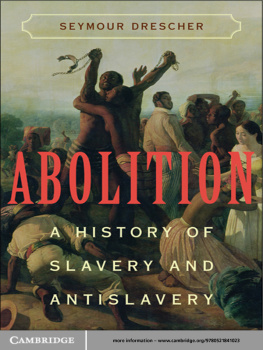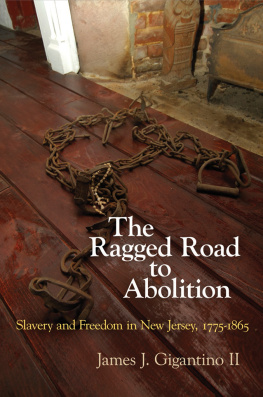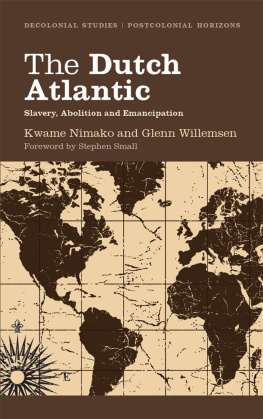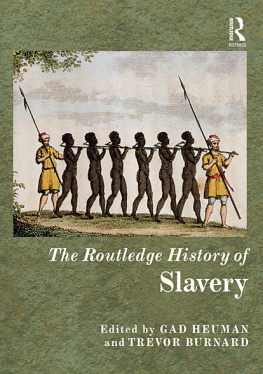EURASIAN SLAVERY, RANSOM AND ABOLITION IN WORLD HISTORY, 12001860
Eurasian Slavery, Ransom and Abolition in World History, 12001860
Edited by
CHRISTOPH WITZENRATH
University of Aberdeen, UK
First published 2015 by Ashgate Publishing
Published 2016 by Routledge
2 Park Square, Milton Park, Abingdon, Oxon OX14 4RN
711 Third Avenue, New York, NY 10017, USA
Routledge is an imprint of the Taylor & Francis Group, an informa business
Copyright Christoph Witzenrath and the contributors 2015
Christoph Witzenrath has asserted his right under the Copyright, Designs and Patents Act, 1988, to be identified as the editor of this work.
All rights reserved. No part of this book may be reprinted or reproduced or utilised in any form or by any electronic, mechanical, or other means, now known or hereafter invented, including photocopying and recording, or in any information storage or retrieval system, without permission in writing from the publishers.
Notice:
Product or corporate names may be trademarks or registered trademarks, and are used only for identification and explanation without intent to infringe.
British Library Cataloguing in Publication Data
A catalogue record for this book is available from the British Library
The Library of Congress has cataloged the printed edition as follows:
Eurasian slavery, ransom and abolition in world history, 12001860 / edited by Christoph Witzenrath.
pages cm
Includes bibliographical references and index.
ISBN 978-1-4724-1058-0 (hardcover) ISBN 978-1-3155-8077-7 (ebook) ISBN 978-1-3171-4001-6 (epub) 1. Slavery Asia, Central History. 2. Slavery Eurasia History. 3. Captivity Asia, Central History. 4. Captiviity Eurasia History. I. Witzenrath, Christoph, 1967
HT1240.5.E87 2015
306.362095dc23
2015000819
ISBN: 9781472410580 (hbk)
ISBN: 9781315580777 (ebk-PDF)
ISBN: 9781317140016 (ebk-ePUB)
Contents
Christoph Witzenrath
Alessandro Stanziani
Donald Ostrowski
Lawrence N. Langer
Jukka Korpela
Bulat R. Rakhimzyanov
Zbeyde Gne-Yac
Charles L. Wilkins
Hans-Heinrich Nolte
Aleksandra Porada
Brian L. Davies
Christoph Witzenrath
Aleksandr Lavrov
Will Smiley
Peter B. Brown
List of Illustrations
Map
Figure
Tables
List of Contributors
Peter B. Brown, Rhode Island College, Providence, USA
Brian L. Davies, University of Texas at San Antonio, USA
Zbeyde Gne-Yac, Balikesir University, Turkey
Jukka Korpela, University of Joensuu, Finland
Lawrence N. Langer, University of Connecticut, USA
Aleksandr Lavrov, University of Paris 4 (Sorbonne), France
Hans-Heinrich Nolte, University of Hannover, Germany
Donald Ostrowski, Harvard University, Cambridge, MA, USA
Aleksandra Porada, Graduate School of Social Research, Warsaw, Poland
Bulat R. Rakhimzyanov, Institute of History of the Academy of Sciences of the Republic of Tatarstan
Will Smiley, University of Cambridge, Queens College, UK
Alessandro Stanziani, cole des hautes tudes en sciences sociales, Paris, France
Charles L. Wilkins, Wake Forest University, Winston-Salem, NC, USA
Christoph Witzenrath, University of Aberdeen, UK
Acknowledgements
The Leverhulme Early Career Fellowship has helped to complete the task of editing and publishing these contributions. The conference on Slavery, Ransom and Liberation in Russia and the Steppe Area, 15002000 that brought together the contributors of this volume has been generously supported by the British Association for Slavonic and Eastern European Studies, the Leverhulme Trust and by the University of Aberdeens School of Divinity, History and Philosophy, the College of Arts and Social Sciences and the Principals Dowry.
Introduction
Slavery in Medieval and Early Modern Eurasia: An Overview of the Russian and Ottoman Empires and Central Asia
Christoph Witzenrath
Current research has demonstrated that early modern slavery was much more widespread than the traditional concentration on plantation slavery in the context of European colonial expansion would suggest.2 Slavery and slave trading, which appeared so shameful even in the Northern American context that its academic breakthrough is relatively recent, remains little researched in Eurasia except for some of the southern, Muslim parts. The pioneer effort to trace the Russian campaigns to extinguish the slave trade in the Caucasus in the eighteenth and nineteenth centuries had to wait more than a decade to merit publication,3 until well after the call for the conference to which the present volume is dedicated. Slavery and the slave trade did not fit well into Marxist models of social development in history in general and in the Russian Empire in particular, lest it might seem backward; their academic study was discouraged.4 Soviet studies appeared after the Second World War prompting to justify the deportation of the Crimean Tatars and the Chechens which rather increased the stain of talking about slavery.5 Moreover, early Russian enslavement of people of Finnish, Belorussian, Caucasian or nomadic backgrounds was usually passed over in silence.6 Such widespread negligence is in stark contrast to the fact that slavery and the human trade were common across wide stretches of Eurasia, and a slave economy played a vital part in the political and cultural contacts between Russia and its Eurasian neighbours. The sheer scale of the phenomenon merits a close look: Eastern Europe from the Caucasus to PolandLithuania was second only in numbers to sub-Saharan Africa as a source of slaves; between 1475 and 1694 it provided between 1 and 2.5 million slaves (estimates) sold mainly in the Black Sea, Mediterranean, the Near and Middle East and Central Asia, not counting those who did not survive. The departure in the Russian history field from narrow approaches which postulated that states and social structures in this area had to be studied as phenomena sui generis, and which could not be compared to further contemporary world areas, has engendered in the last 20 years new comparative frameworks of imperial and borderland studies focusing on related issues.7 Nevertheless, slavery in this geographical area has lingered on, and sometimes even beyond the fringes of scholarly perception.8
Studies of slavery in Eurasia now benefit from departures in the global field: recent studies have toppled a seemingly unitary definition of slavery from its secure position, generally based loosely on popular conceptions of plantation slavery in the American South, and replaced it with far richer understandings of slavery as a term with many, varied meanings, ranging from the horror of chattel slavery to more surprising forms of adoption, diplomacy, military posturing, contract work, social security, or currency exchange. However, scholars still consider slavery as the most extreme form of domination which, even in its mild forms, strongly deprives and coerces its victims, and stands apart from other forms of restricted freedom. Yet, even with enslavement, the slavers ability to extract labour is not limitless and some restricted means of power are available even to enslaved persons. Ehud Toledano has therefore suggested conceiving of slavery as an involuntary relationship of mutual dependency between two quite unequal partners.9 Moreover, such broader definitions of slavery allow us to better account for diverging internal views in the source material, especially in those areas where more people were captured than sold.




